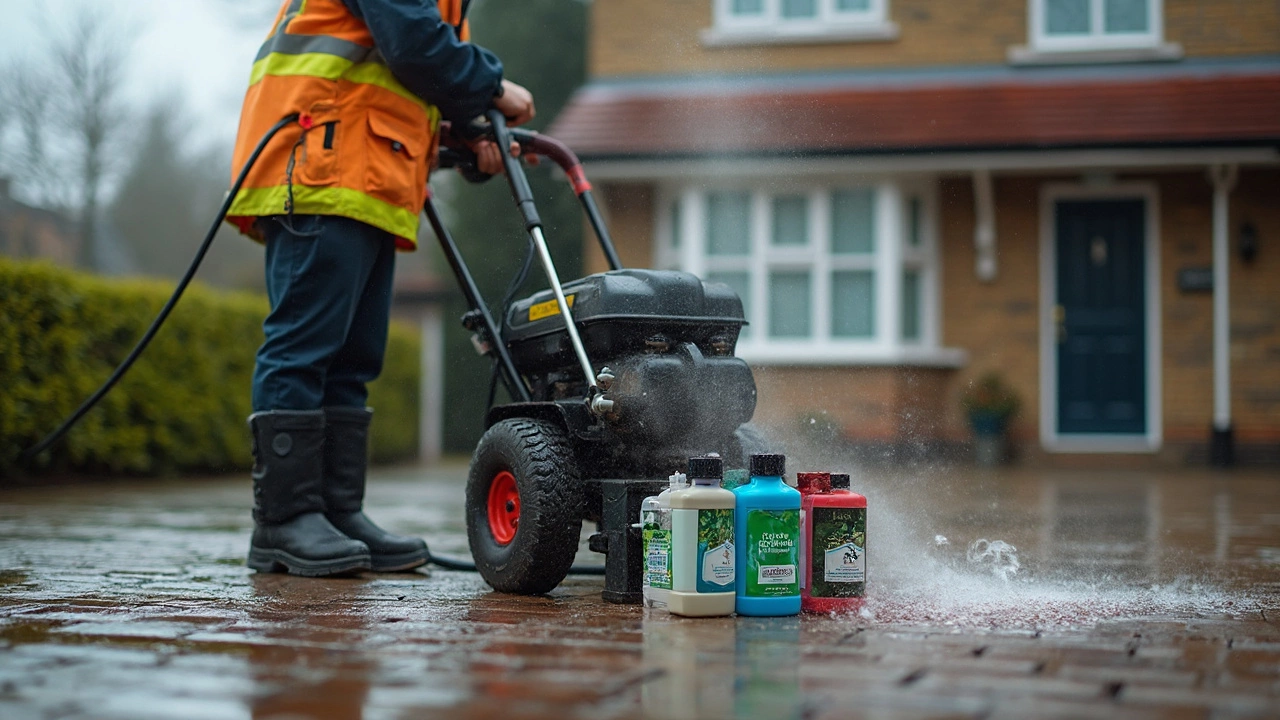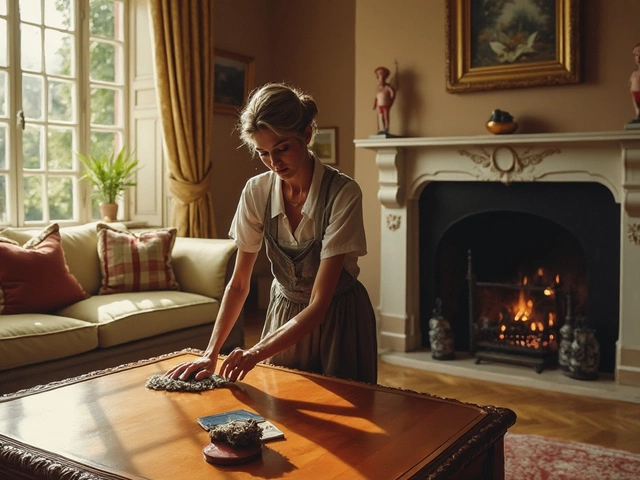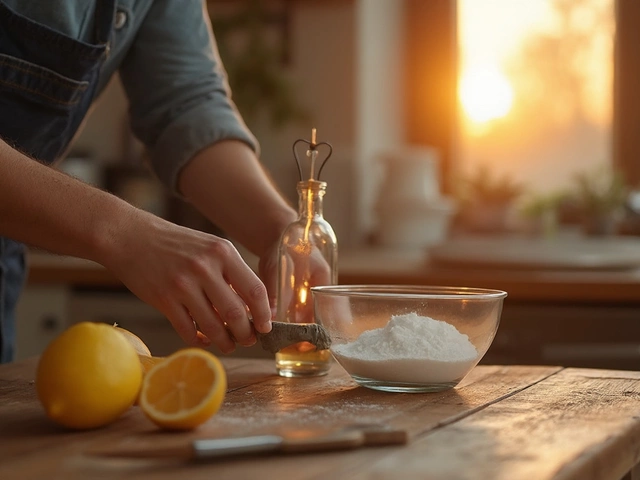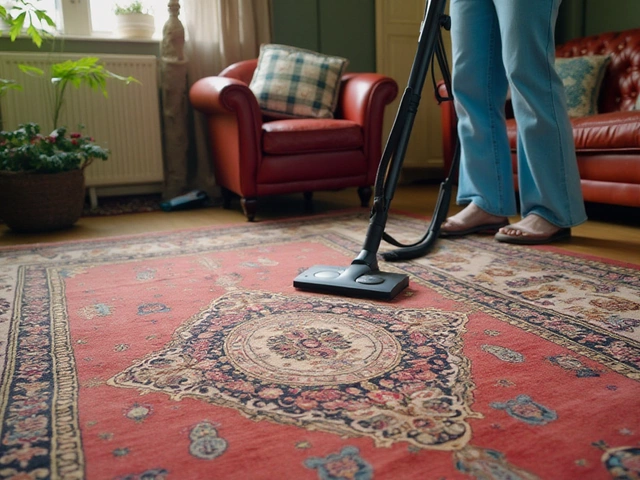Ever watched a pro power washer blast away years of gunk in seconds and thought, “What’s that magic potion they’re spraying?” Spoiler: it’s not just water. The real secret is the solution mixed into those tanks. Pros don’t just wing it—they’ve got specific recipes for every job, and most of them go way beyond dish soap.
The go-to professional mix often starts with a surfactant. That’s a fancy word for soap designed to cut grease and loosen dirt fast. They’ll toss in sodium hypochlorite (yep, bleach) when dealing with mold or mildew on siding, concrete, and driveways. This isn’t the same as your laundry bleach, though. Pro-grade sodium hypochlorite hits 10-12%—it’s way more concentrated than anything on a grocery shelf.
- What’s Inside a Pro’s Tank: The Basic Cleaning Mix
- Specialty Chemicals for Stubborn Grime
- Eco-Friendly Alternatives They’ll Actually Use
- Tips Pros Rely On for Maximum Results
- Mistakes That Cost Beginners Time and Money
What’s Inside a Pro’s Tank: The Basic Cleaning Mix
If you pop the lid on a professional's pressure washer tank, you’re not going to see just plain water sloshing around. Most pros are running a mix they’ve dialed in for different surfaces and jobs. For everyday cleaning on siding, decks, driveways, and sidewalks, it's all about three heavy hitters: surfactants, sodium hypochlorite, and water. Sometimes there’s a dash of a buffer or thickener to help it cling to surfaces longer.
The surfactant is the soap—it helps the water spread out and lift dirt so it can get blasted away. Think of it as the muscle behind every good wash. Sodium hypochlorite is where the real magic happens, especially for mold, algae, and mildew. The pro stuff goes up to 12%—much higher than the regular bleach you get from the store. Most companies will mix this at about a 1:4 or 1:5 ratio with water, depending on how nasty the grime is.
Here’s a basic breakdown for exterior home cleaning:
- Pressure washing solution: 1 part sodium hypochlorite (10-12%)
- 4 parts water
- A splash of surfactant (usually ounces per gallon—pros use branded products like Elemonator or Simple Cherry)
Some pros keep it simple, while others tweak their mixes for different seasons or stains. On a sunny day? They’ll add a bit more surfactant to slow down how fast the mix dries. Dealing with tons of organic growth? They bump up the bleach for a few jobs until everything’s spotless.
Here’s a quick look at a typical pro cleaning mix versus store-bought cleaners:
| Ingredient | Pro Mix | Store Cleaner |
|---|---|---|
| Sodium Hypochlorite Strength | 10%-12% | 3%-6% |
| Surfactant | High-grade (custom selection) | Standard (often generic soap) |
| Mix Ratio | 1:4 or 1:5 | Ready to use |
Here’s a tip: pros almost never spray straight chemical. They know too much concentration can etch concrete and kill grass. They’ll often pre-wet plants, rinse everything fast, and stick to safe ratios to keep surfaces (and landscaping) looking their best. If you’re thinking of DIY, check labels and follow the same ratios the pros do—you’ll get pro-level results without nuking your yard.
Specialty Chemicals for Stubborn Grime
When regular soap just doesn't cut it, the pros reach for specialty chemicals. We're talking grease stains on the driveway, old oil spots in the garage, chewing gum stuck to the sidewalk—these ugly messes need more power than basic bleach or water can give.
For greasy concrete or parking lots, pros use heavy-duty degreasers. These formulas cut through layers of engine oil, hydraulic fluid, or even spilled barbecue sauce. You’ll see chemicals labeled as sodium hydroxide or potassium hydroxide in these products. These alkalis break down oily stuff, but you’ve got to be careful—they’ll also chew up paint and mess with plants if you’re sloppy.
Rust stains call for acid-based cleaners. The big one is oxalic acid—no need for a chemistry degree, but it’s a proven weapon against those orange splotches you see under leaky pipes or metal furniture. For calcium or mineral buildup (think hard water marks on bricks or stone), pros bring in acidic solutions like muriatic acid—used with major caution, trust me. Safety gear isn’t optional when spraying the tough stuff.
| Chemical | What It Tackles | Extra Warning |
|---|---|---|
| Sodium Hydroxide | Grease, heavy oils | Can damage paint, kills grass |
| Oxalic Acid | Rust stains | Use gloves and goggles |
| Muriatic Acid | Mineral buildup, scale | Highly corrosive, wear a mask |
What about graffiti? You’ll want a graffiti remover or paint stripper—these usually have solvents like acetone or methyl ethyl ketone. Pros often use a brush first to help the chemicals get deep, then pressure wash what’s left. For gum on concrete, citrus-based removers are a favorite—they loosen the gunk without being super toxic.
One more pro tip—never just grab the strongest thing you find. Certain pressure washing jobs call for dialing back the chemical firepower if you don’t want to ruin surfaces. Always check what you’re cleaning first: wood decks, vinyl siding, and painted surfaces can get wrecked if the wrong chemical gets sprayed on.
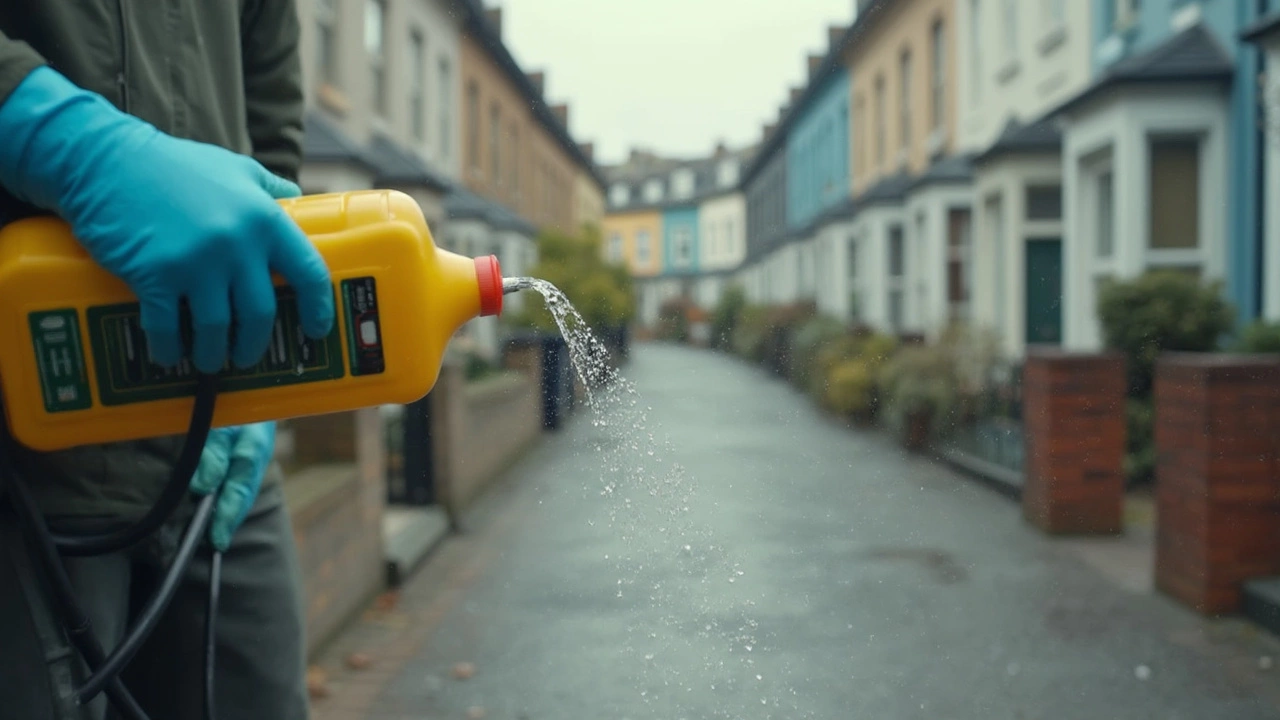
Eco-Friendly Alternatives They’ll Actually Use
It’s not just homeowners asking for greener choices—professional power washers have their own reasons to switch up their “go-to” chemicals. After all, run-off from harsh chemicals can mess up gardens, lawns, rivers, and even damage the surfaces they’re supposed to protect. Cities are starting to crack down, too. So, what do the pros reach for when they want a solid clean without harming everything in the process?
Plant-based detergents are rising fast. One of the most common ones pros trust is a soap with a coconut-oil base. Why coconut oil? Because it breaks down dirt well, is biodegradable, and won’t leave behind harmful stuff in your soil. Look for products labeled as ‘non-toxic’ and ‘phosphate-free.’
Many pros have switched to hydrogen peroxide cleaners for jobs where mold and mildew need tackling but bleach is overkill. Hydrogen peroxide gets the job done and then turns right into water and oxygen once it finishes reacting. No nasty after-effects. There are also citrus-based degreasers out there. They cut grease and grime from garages and patios and leave behind a light orange smell instead of that sharp chemical odor no one likes.
Remember, you want your pressure washing job to look great, but also to be safe for kids, pets, and the yard. That’s why these alternatives are getting popular—even major manufacturers like Simple Green and Krud Kutter now have certified eco-friendly power washing solutions. These products are specifically made for use with high-powered washers, so they foam up just right and rinse away clean.
| Brand | Main Ingredient | Surface Suitability | Biodegradable? |
|---|---|---|---|
| Simple Green Oxy Solve | Hydrogen Peroxide | Siding, decks, driveways | Yes |
| Krud Kutter House & Siding Cleaner | Surfactants / Plant-based | Vinyl, stucco, concrete | Yes |
| EcoGen Outdoor Cleaner | Bacteria Enzymes | Patios, stone, wood | Yes |
If you’re considering a switch, always double-check the label. Some products say “green” but only have a few eco-friendly ingredients. Legit solutions will break down easily in the environment, not clog up your washer, and still pack enough power for those tough jobs. When in doubt, ask your supplier or search up reviews—pro cleaners love to share what works (and what doesn’t) in real-world conditions.
Tips Pros Rely On for Maximum Results
Ask any seasoned power washer, and they’ll say technique matters as much as any chemical. Here’s what separates a pro job from a mediocre one.
- Pressure washing isn’t just about brute force. Pros choose the right nozzle—wide-angle for siding and fragile surfaces, tighter for concrete. Wrong nozzle, and you’ll either leave streaks or gouge what you’re cleaning.
- They let the solution do its job. Spraying soap or a sodium hypochlorite mix? Most pros apply it, then wait at least 10 minutes. The magic happens during the soak—just blasting away right away misses the point.
- Work top to bottom. Whether it’s a house or a fence, let gravity do some of the work. Rinsing from the top keeps you from hitting the same dirty runoff multiple times—it’s faster and looks better.
- Test small spots first. Pros always try out solutions and nozzle settings on a hidden patch so they don’t ruin paint or cause discoloration on big, visible sections.
- Freshwater rinse. After using chemicals, a thorough rinse with clean water prevents streaks, residue, or accidental plant damage nearby. A lot of newbies miss this step and end up with patchy results.
One smart trick: mix up small batches of cleaning solution and tweak if something’s not working, instead of going all in from the start. This saves product and prevents costly mistakes. There’s no badge for using the strongest mix—using just enough to get the job done is the pro move.
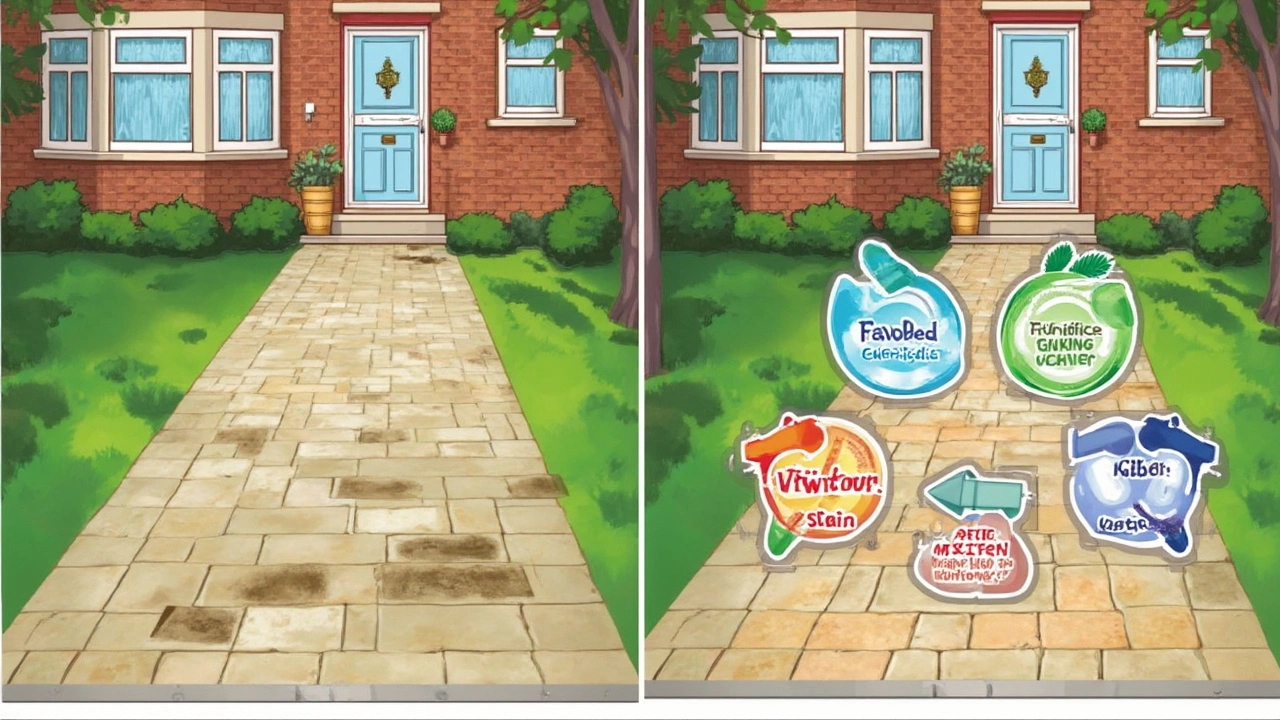
Mistakes That Cost Beginners Time and Money
Jumping into pressure washing looks easy, but there are some rookie mistakes that can end up costing way more than you’d expect. If you’re not careful, you might damage your house, waste good chemicals, or fall down that rabbit hole of endless scrubbing with zero results.
Probably the most common blunder? Using the wrong solution or mixing it up incorrectly. Too much sodium hypochlorite will strip color from siding or leave nasty marks on driveways. Too little and you’re just moving dirt around. Always check the label and grab a measuring cup—proportions matter a ton.
Choosing the wrong nozzle is another trap. A red tip (0-degree nozzle) is way too aggressive for most surfaces and has been known to gouge wood or etch concrete. Stick with a wider spray for siding or decks unless you really know what you’re doing. Check out this handy nozzle chart for reference:
| Nozzle Color | Spray Angle | Best For |
|---|---|---|
| Red | 0° | Stubborn stains on hard surfaces (use with caution!) |
| Yellow | 15° | Concrete, metal, heavy-duty cleaning |
| Green | 25° | General cleaning, decks, siding |
| White | 40° | Windows, vehicles, light cleaning |
Another thing beginners often skip is pre-wetting surfaces. Blasting away at dry, sunbaked concrete pretty much locks in stains. Hose things down first—especially on hot days, or when using stronger chemicals.
Skipping personal protection? Huge mistake. Pros wear goggles and gloves for a reason. Cleaning solutions can burn skin and bleach spots are permanent on clothes. Don’t let the gear slow you down; it’s what keeps you from learning the hard way.
- Double-check your mix ratios—too much chemical can cause big problems.
- Test the power washer on a hidden spot before going full throttle.
- Stay clear of electrical outlets and don’t spray limestone or softer masonry—those get etched super easily.
- When working above your head, go slow. Water hits back and makes ladders shaky.
One last stat: According to a 2023 insurance survey, rookie power washing led to almost $100 million in property damage in the United States—mostly because of wrong nozzles or chemical burns on surfaces. Don’t learn these lessons the expensive way; a couple of extra minutes planning saves a fortune fixing mistakes.
